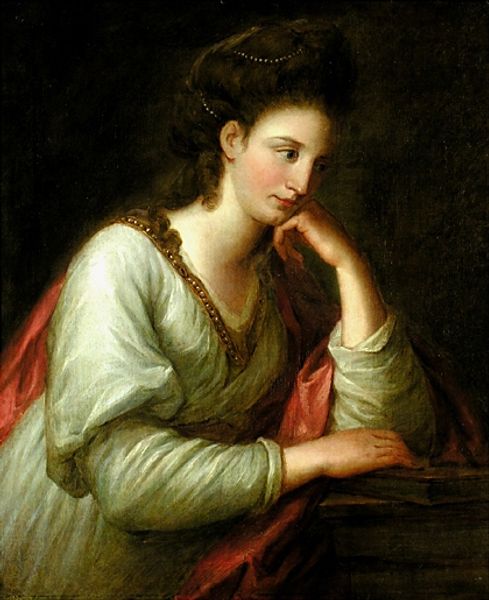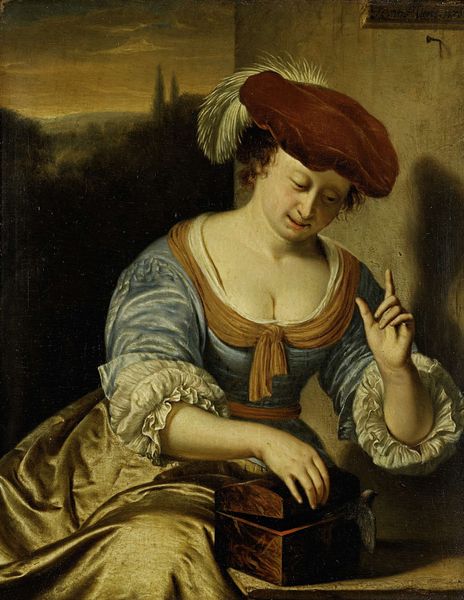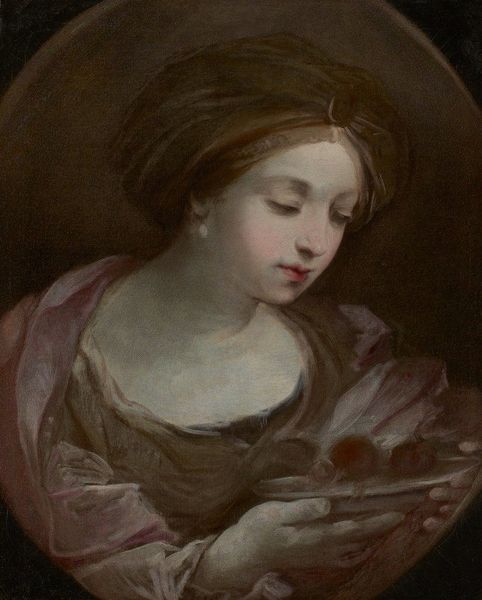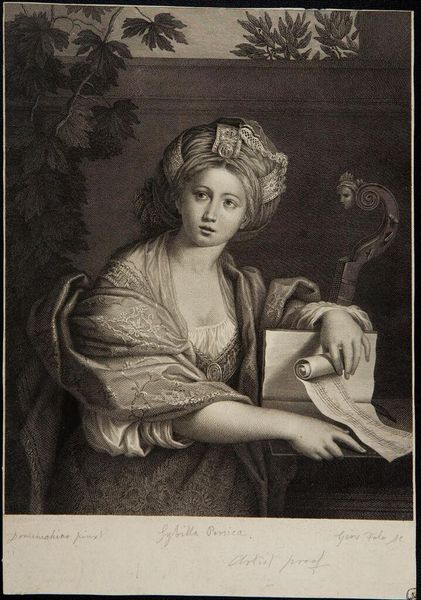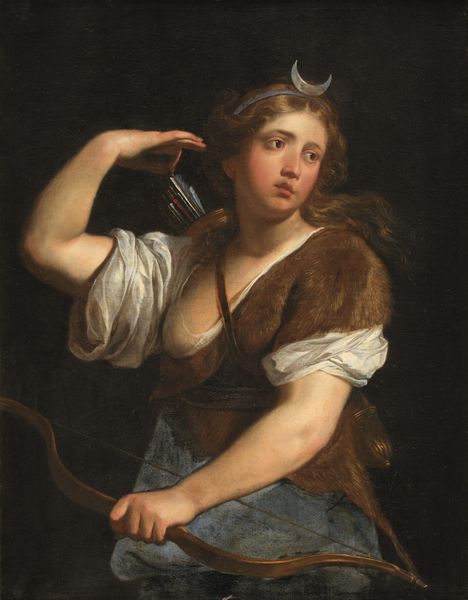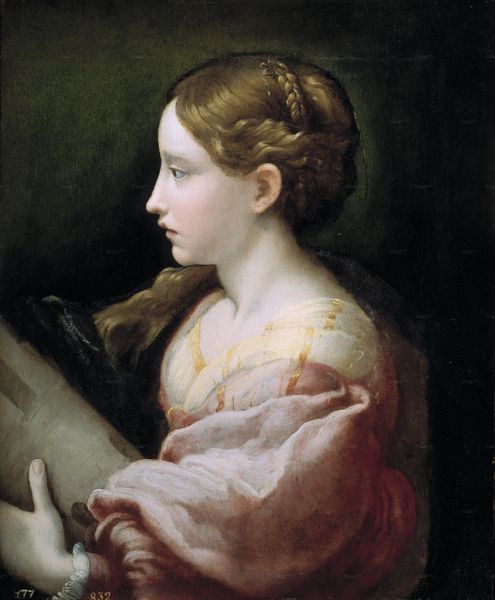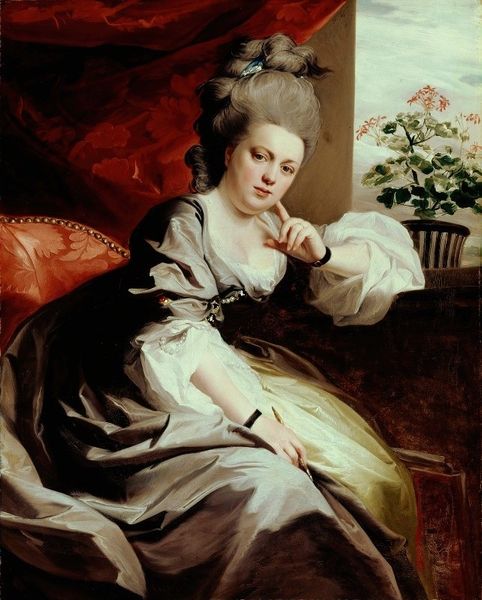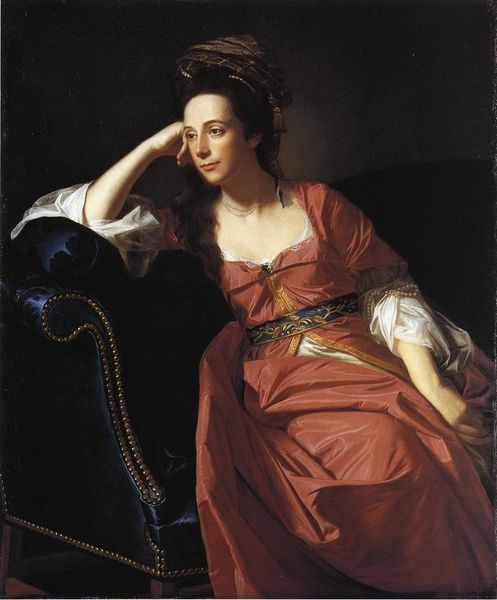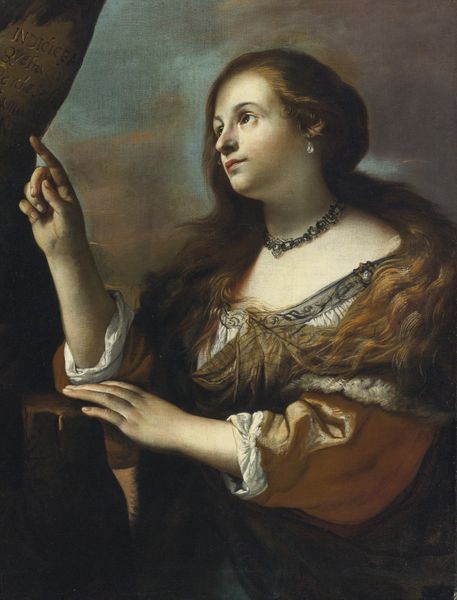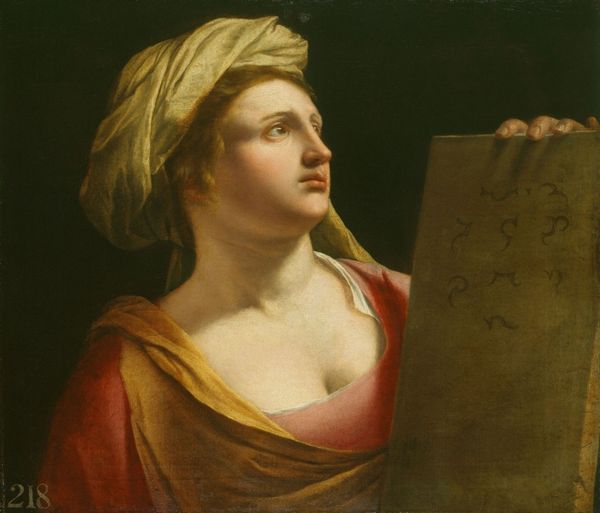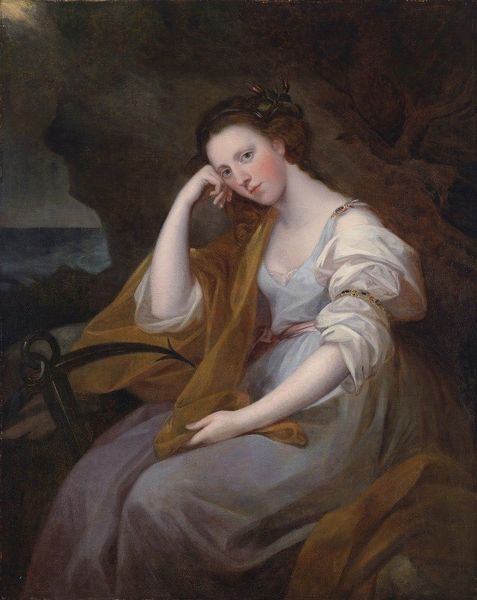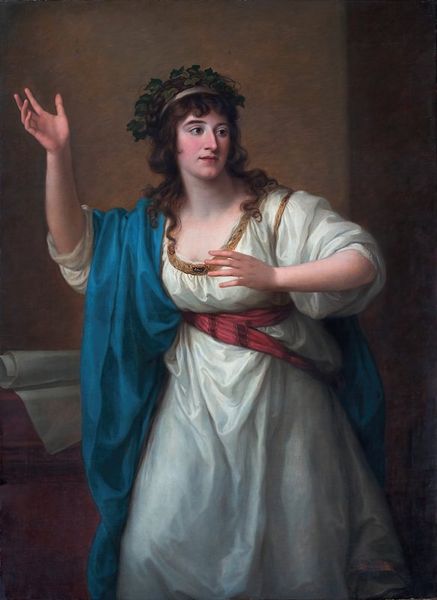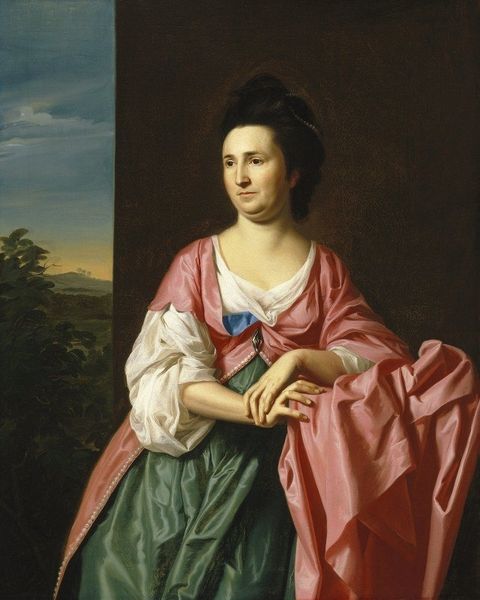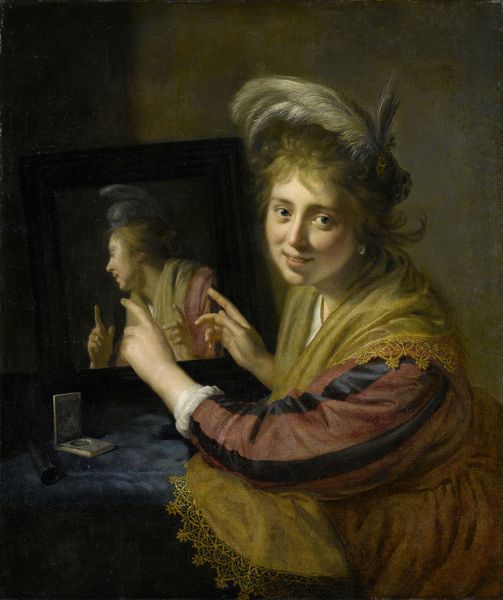
Copyright: Public Domain: Artvee
Editor: This is Angelica Kauffmann’s "A Sybil," painted in 1775, using oil. The painting depicts a thoughtful woman pausing from writing, a quill in her hand. The overall impression is one of quiet contemplation. What stands out to you in this piece? Curator: Immediately, I'm struck by how Kauffmann employs the Sybil as a figure brimming with cultural memory. Consider: Sybils were oracles, figures bridging the divine and the mortal. Kauffmann is not merely painting a portrait; she's evoking centuries of inherited understanding. Note the book, seemingly her own writings, perhaps a means by which Kauffmann connects to, and extends, that lineage of wisdom? Editor: That’s interesting. So you see her less as a portrait of a person and more as a symbol of female wisdom through history? Curator: Precisely! Look at the turban – is it merely an exotic detail, or a deliberate attempt to evoke the Sybil’s traditional associations with the East, with ancient mysteries? The Rococo style gives it a gloss, but those archetypal elements of power remain. How does it speak to you as a contemporary viewer? Editor: Well, knowing that context makes me see beyond the surface-level beauty of the painting. It's no longer just a pretty picture; it's about claiming a voice, a history. Curator: And remember, Kauffmann herself was forging her own path in the male-dominated art world. So perhaps, this Sybil is a projection of her own intellectual aspirations and struggles? A visual statement of belonging to a legacy. Editor: I hadn’t thought of it that way before. It's fascinating to see how much symbolism is layered into this single image. Thanks! Curator: Indeed, it’s a reminder that images often speak volumes beyond what we initially perceive, echoing through history and memory.
Comments
No comments
Be the first to comment and join the conversation on the ultimate creative platform.
